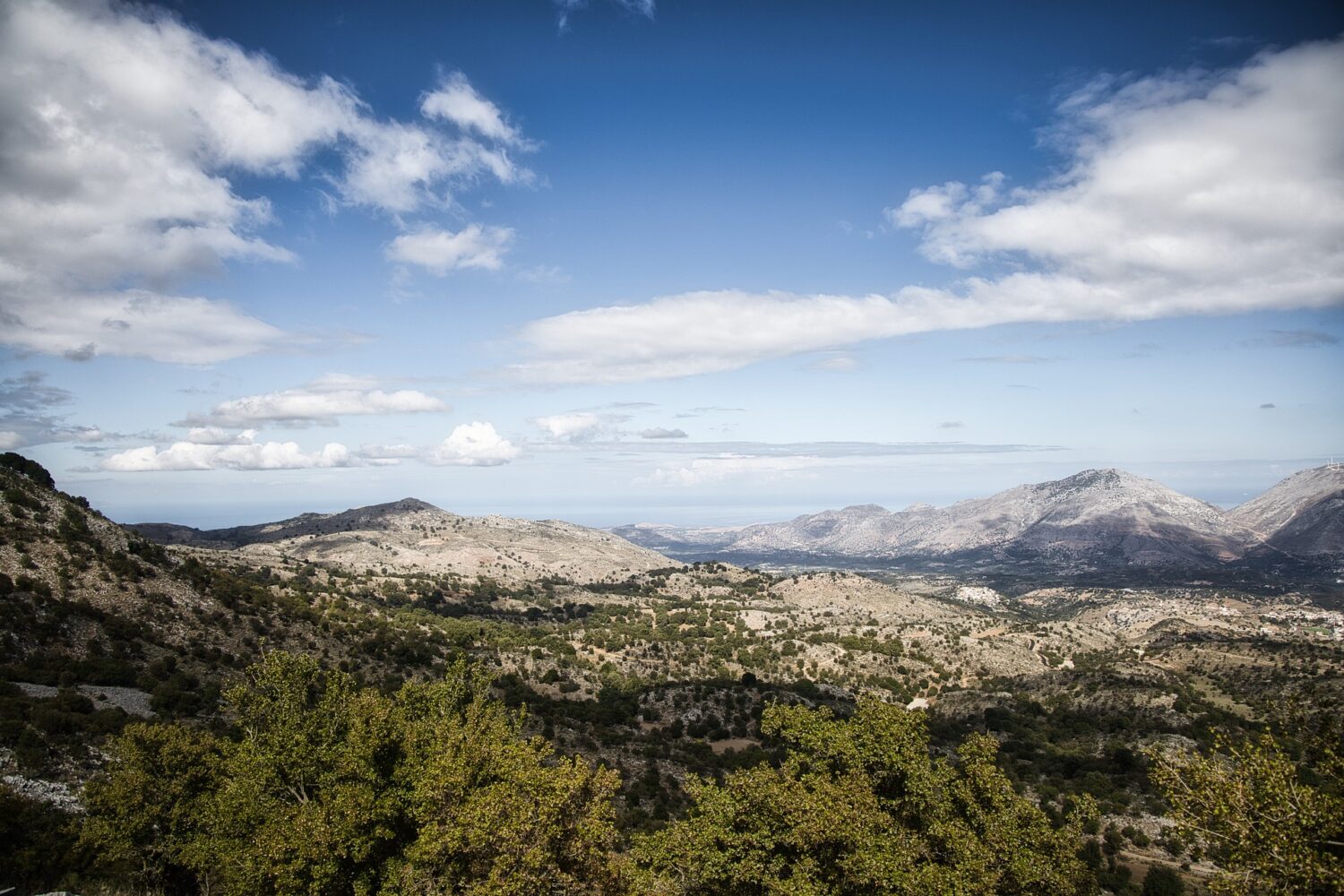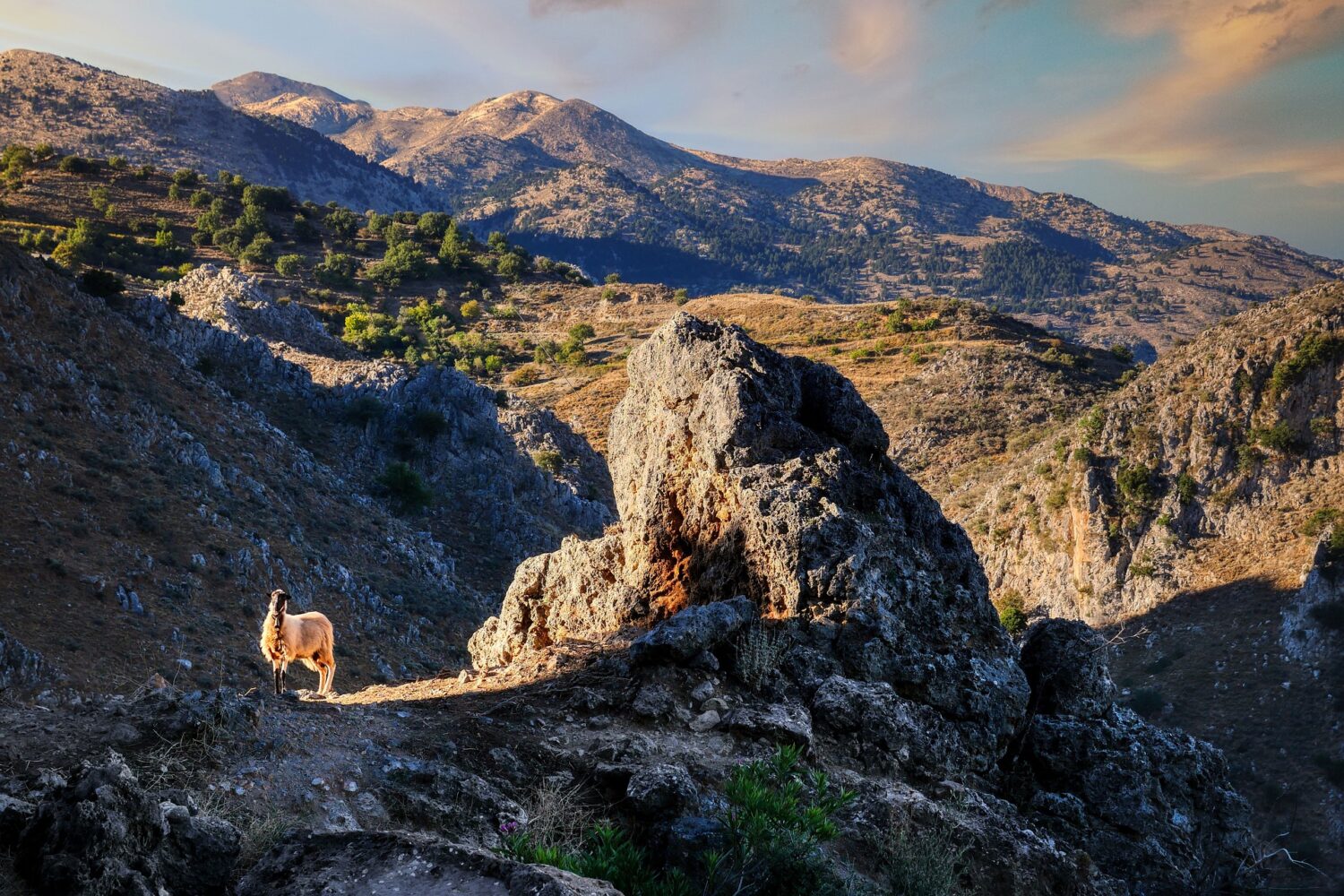
Sphakia is a remote and mountainous area in the southwest of Crete.
It is home to the White Mountains, deep gorges, wild beaches, and traditional villages that have always maintained their culture and customs. We know the region for its rugged beauty and dramatic landscapes that have remained untouched by modern development.
The White Mountains offer a variety of landscapes, including high mountains, plateaus, forests, and valleys. As visitors climb higher into the mountains, they’ll encounter steep cliffs, rugged terrain, and snow in the winter months. The highest peak, Pachnes, is often covered in snow. At 2453m (8047.9 feet) it is only 3m (3.5 feet) lower than Psiloritis, the highest summit of Crete in the Ida mountain range.
The range stretches for 45 kilometres (28 miles) across western Crete and consists of three distinct massifs: the Western, Central, and Eastern. The formations are made up of limestone and dolomite rocks, which give them their distinctive white colour. The mountains also contain several gorges, including the famous Samaria Gorge, which is the longest in Europe, and the Imbros Gorge, which is equally as impressive but less crowded.
Below is a video of a couple hiking in the White Mountains of Sphakia which is a favourite of mine. It was made by: ByGeorgeFilms.
Flora and Fauna
These mountains boast an extraordinary variety of plant and animal life, many of which are found only in this area. There are over 1,700 species of plants in the region, including over 120 endemic species. The plants range from herbs and shrubs to trees such as the Cretan maple and the Cretan fir.
The wildlife is equally as impressive, with many unique species found only in this region. The mountains are home to several birds of prey, including the golden eagle and the peregrine falcon. Mammals, such as the Cretan agrimi or Krikri (a wild goat) and the Cretan wildcat, can also be spotted, as well as reptiles such as the Cretan lizard and the Greek tortoise.
The White Mountains have a rich cultural and historical heritage. The mountains were used as hideouts by Cretan rebels during the Ottoman occupation of Crete in the late 19th and early 20th centuries. During World War II, the mountains also served as a stronghold for the Cretan resistance fighters against the Nazi occupiers.
Visiting the White Mountains
Depending on visitors’ preferences and physical abilities, there are several ways to experience the White Mountains. Many visitors choose to simply enjoy the stunning scenery and fresh mountain air by hiking some of the many trails that crisscross the mountains. The trails range from easy to difficult, and visitors can choose from shorter day hikes to multi-day treks.
The beaches of Sphakia are wild and unspoiled, offering a breathtaking contrast to the crowded touristy beaches of the north coast. The beach of Marmara is accessible only on foot, and it rewards visitors with crystal-clear waters and a tranquillity that is hard to find elsewhere on the island. The beach of Loutro is a hidden gem that can only be reached by boat or foot, offering a picturesque and idyllic setting.
Sphakia is also home to a few traditional villages that have preserved their way of life since ancient times. The village of Anopolis, perched on a hill overlooking the sea, is a prime example of Sphakia’s culture and history. The village has a well-preserved Venetian tower and a church that dates back to the Byzantine era. The village is famous for its hospitality and tradition of brewing raki, a local drink made from grapes.
In conclusion, Sphakia is a wild and beautiful region that offers a unique perspective on Crete’s nature and culture. It is a perfect destination for adventure seekers, hikers, and nature lovers who want to escape the crowds and experience an authentic and untouched side of the island. Sphakia’s breathtaking landscapes, hidden beaches, and traditional villages will leave visitors with lasting memories and a deep appreciation for Crete’s natural beauty.
Map of Sphakia
Table of Contents
Views: 1154
